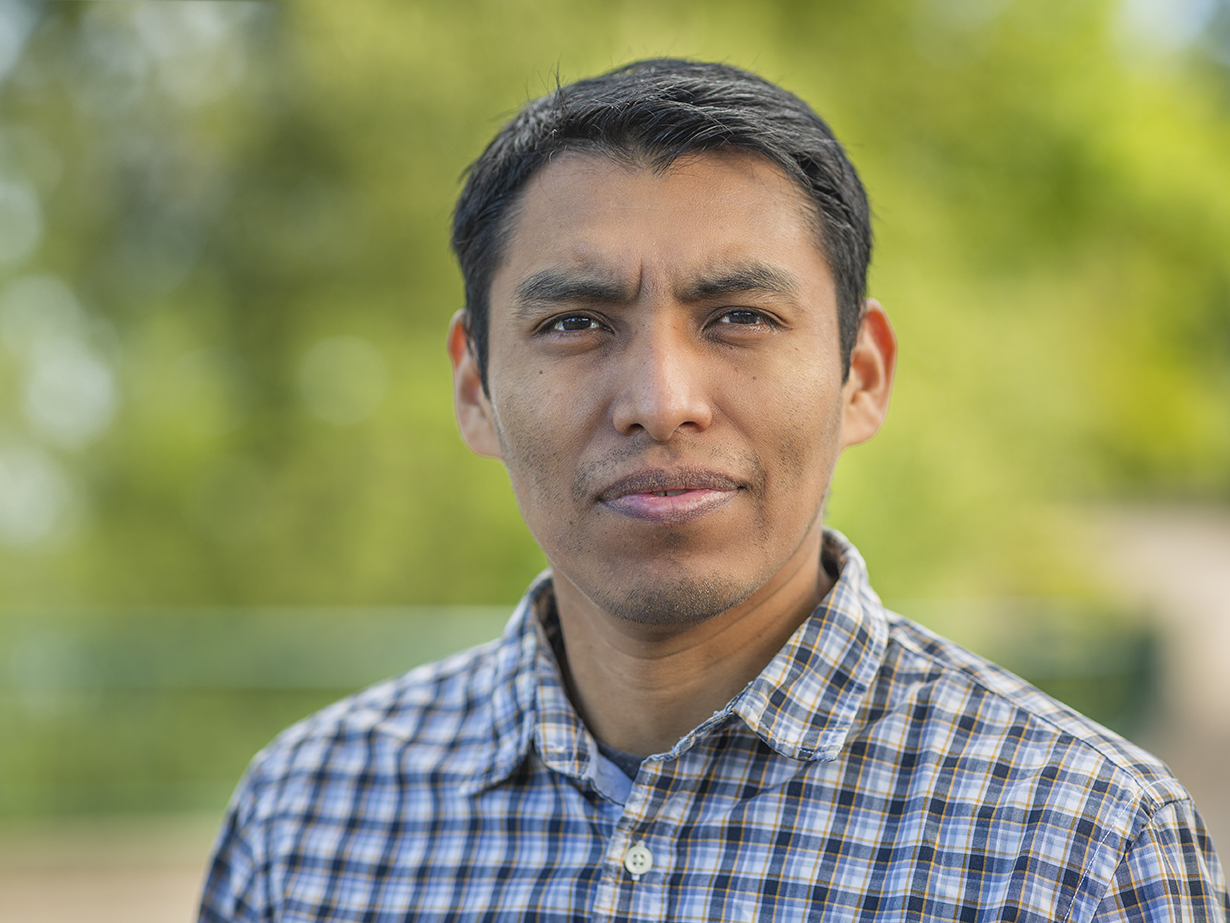A rosary and his mom’s blessing are all Roberto Oran took when he left his small village in Mexico. His faith kept him going, but his belief in higher education is what got him to where he is now.
The village in the Mexican state of Oaxaca where Oran was born in 1987, Santiago Ayuquililla, is part of Mexico’s indigenous Mixtec region. He was the middle child in a family of farmworkers. “Our house was built by my father with his own hands,” he recalls.
After his birth, his mother suffered health problems, and the family had to sell their land in order to pay for her medical treatment. They moved in with his grandmother. “I was put on a donkey while the rest of the family walked to our new place,” he was told.
Oran went to a local Catholic school until 6th grade, then attended a Catholic boarding school in Guadalajara. “Some nuns at that school were from the Philippines and South Korea. They were very strict,” he remembers. “We were put in groups. If one kid didn’t do what they were supposed to, all of the kids in that group would get punished.”
As people migrated away from the Mixtec community and embraced Catholicism, they lost the Mixtec language. Oran never learned Mixtec, and his grandparents told him they would get beaten if they were to speak their native language. “At school if you spoke the native language you would get made fun of,” he notes. “The older people don’t really know the language now either. They mostly speak Spanish.”
After finishing boarding school in the 9th grade, Oran went back home. No further schooling was available, so he went to work alongside his family. He started making pottery with his dad, even though it did not pay well.
When Oran started doing art with watercolors, his father told him, “Eso no te va a dar de comer” (that will not feed you).
“Those words hurt me.” says Oran, “because it was what I really wanted to do.”
Oran realized his future was limited if he stayed in Mexico. Then one day, an uncle who was visiting from the U.S. told him of all the great things America had to offer. That was all the encouragement he needed. One day, his uncle offered him the chance to cross the border with him, and he said he would only ask once. At 15 years old he left home, feeling sad about his decision but realizing that he might have a greater potential in the United States. His mother gave him her blessing and his father said goodbye with the admonition, “Tienes que probar tu talento” (you must prove your talent).
With that Oran took on what would be his biggest journey yet.
The journey to the border wasn’t easy. Traveling together, Oran and his uncle took many buses, starting at Huajuapan de Leon, then Puebla City, Mexico City, Sinaloa. Finally they arrived in Nogales, Sonora, near the U.S. border.
They waited two days in Nogales, and then drove to the Arizona border and started walking. What Oran thought would only take a few hours was actually a journey of days with only short stops to rest.
After 10 days, they reached Tucson, Arizona. There, Oran was separated by the coyote–a guide who specializes in facilitating border-crossings–from his uncle and sent to Los Angeles, where his older brother, Carlos, was already living. He was surprised–and not happily so–by what he saw as he rode into Los Angeles.

“I remember looking out the window and seeing homeless people. I thought America was going to be this great place, but maybe not,” he says.
In 2003, Oran and his brother moved to Salem, Oregon, because his brother knew people from Oaxaca there. The people he knew were part of the early wave of Mexican farm workers who came to Oregon in the 1970’s. Here, Oran enrolled at West Salem High School. With almost no English, high school was a steep challenge for Oran. Still, he applied himself and tried to do his best. One teacher noticed the delicacy and detail in his homework, and suggested he take an art class.
In his ESL (English as a Second Language) class, Oran’s first drawing was a train. “At that time the train signified that I had traveled from far away,” he explains.
A teacher named Brenda Hauswirth suggested that he enter a high school art contest–which he won, ending up with a $200 prize. After that Oran participated in several other art contests.
He entered other art contests, and banked his prize money with hopes of entering college. But his undocumented immigration status added a wrinkle to the college admissions process. In 2007 he was able to enroll at Chemeketa Community College. He earned his associate degree in 2016.
In 2022, Oran worked with both Pineros y Campesinos Unidos del Noroeste, an organization that amplifies the voices of marginalized workers, and the Salem Art Association. He painted portraits of three local Hispanic women who had helped the community progress, either by being the first in a government job, the first to attend college, or by providing affordable housing to migrants and farmworkers. Oran’s future art projects include a mural at Chemeketa Community College.
For Oran, art is a form of spiritual healing. “I discovered that painting and art are something I can’t live without,” he says.
He says he is less interested in making money than in helping people. “I don’t think too much about the future because sometimes when you plan it, it doesn’t go the way you plan,” he reasons. “So instead I try to have short term goals and do the best I can with my art.”
Faith and optimism are what have kept Oran going. He explains, “He llegado a cumplir mis metas pero por la situación de estatus legal es una historia diferente. Lo que les diría es seguir adelante, lo más valioso es ayudar a los demás” (I have come to fulfill my goals but because of my legal status it’s a different story. What I would say is to keep moving forward and help others because it is what is most valuable).”

